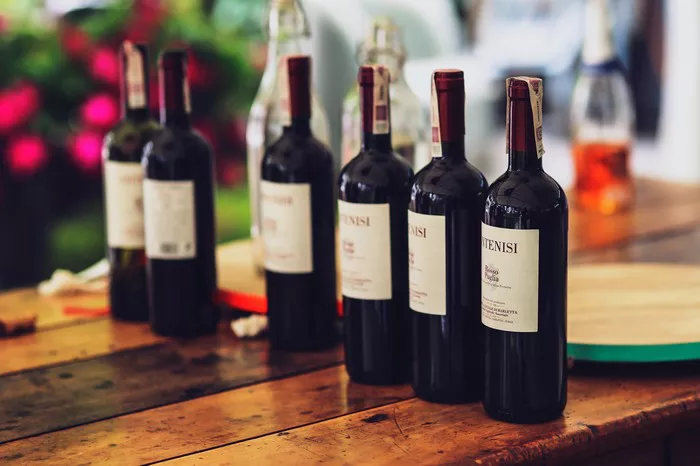Introduction to Chardonnay Products
Chardonnay, a quintessential white wine, stands tall among the aristocracy of grape varietals. Revered for its versatility and adaptability to various winemaking styles, Chardonnay has secured its place as one of the most beloved wines globally. Originating from the Burgundy region of France, Chardonnay has journeyed across continents, adapting to diverse terroirs and winemaking techniques, resulting in a spectrum of flavors and styles.
Flavor Profile of Chardonnay
Understanding the flavor profile of Chardonnay is paramount to successful food pairing. Chardonnay typically exhibits a wide array of aromas and flavors, ranging from crisp green apple and citrus to tropical fruits like pineapple and mango. Depending on factors such as terroir, oak aging, and winemaking methods, Chardonnay can also display notes of vanilla, butter, and toast. Moreover, the acidity levels can vary, from vibrant and zesty to rich and creamy, influencing its compatibility with different cuisines.
Pairing Suggestions
Pairing food with Chardonnay is akin to composing a symphony, where each note complements and enhances the other, resulting in a harmonious culinary experience. While Chardonnay’s versatility allows it to pair with a wide range of dishes, certain guidelines can help in creating a delightful synergy between the wine and food.
Creamy Dishes: The rich and buttery texture of Chardonnay harmonizes exquisitely with creamy dishes such as Alfredo pasta, risotto, or chicken pot pie. The wine’s creamy mouthfeel mirrors the velvety sauces, creating a luxurious dining experience.
Seafood: Chardonnay’s crisp acidity and subtle oak undertones make it an excellent companion for seafood delicacies. Grilled shrimp, lobster tail, or pan-seared scallops complement the wine’s citrusy notes, while its weight stands up to richer dishes like lobster thermidor or creamy seafood chowder.
Poultry: Whether roasted, grilled, or fried, poultry dishes resonate beautifully with Chardonnay. The wine’s fruity aromas and hints of vanilla accentuate the succulence of roast chicken, turkey, or duck, while its acidity cuts through the richness of creamy sauces or crispy skin.
Soft Cheeses: Chardonnay’s affinity for creamy textures extends to soft cheeses like Brie, Camembert, or triple cream varieties. The wine’s buttery notes complement the cheeses’ lusciousness, creating a delectable pairing that tantalizes the palate.
Lighter Fare: Chardonnay’s versatility shines when paired with lighter fare such as salads, sushi, or grilled vegetables. Its crisp acidity and refreshing fruitiness provide a delightful contrast to the freshness of the ingredients, elevating the dining experience.
Pairing Examples
Grilled Salmon with Lemon Butter Sauce: The vibrant acidity of Chardonnay cuts through the richness of the buttery sauce, while its citrusy undertones enhance the flavor of the grilled salmon, creating a harmonious marriage of flavors.
Butternut Squash Risotto: The creamy texture of the risotto resonates with the wine’s velvety mouthfeel, while its subtle sweetness complements the Chardonnay’s fruity notes, resulting in a sumptuous pairing that delights the senses.
Chicken Caesar Salad: The crisp acidity of Chardonnay provides a refreshing counterpoint to the salad’s tangy dressing, while its citrusy aromas accentuate the flavors of the grilled chicken and fresh greens, making it a perfect match for a light lunch or dinner.
Temperature and Eating Techniques
Optimal serving temperature plays a crucial role in enhancing the flavors and aromas of Chardonnay. Generally, Chardonnay is best served slightly chilled, between 45°F to 55°F (7°C to 13°C), allowing its fruity and floral nuances to shine without being overshadowed by excessive coldness. To achieve the ideal serving temperature, refrigerate the wine for about an hour before serving, or immerse it in an ice bucket for 20-30 minutes for quicker chilling.
When enjoying Chardonnay with food, consider the eating techniques that can elevate the tasting experience. Savor each sip of wine before taking a bite of food, allowing its flavors to unfold on the palate. Take note of how the wine interacts with different dishes, noting any flavor enhancements or contrasts. Experiment with alternating between sips of wine and bites of food to discover new flavor combinations and sensations, unlocking the full potential of the wine pairing.
Experiments and Personal Preferences
Exploring the realm of Chardonnay food pairing is an adventure ripe with opportunities for experimentation and discovery. While traditional pairings serve as reliable guidelines, don’t hesitate to venture into uncharted territory and trust your palate to guide you. Experiment with contrasting flavors and textures to create dynamic pairings that surprise and delight your senses. Whether you prefer classic combinations or innovative culinary creations, the beauty of Chardonnay lies in its adaptability, offering endless possibilities for gastronomic exploration.
Ultimately, personal preferences play a significant role in determining the perfect Chardonnay pairing. Whether you gravitate towards crisp and unoaked expressions or prefer the opulence of oak-aged varieties, there’s a Chardonnay style to suit every taste. Trust your instincts, embrace culinary curiosity, and embark on a journey of culinary discovery, where each sip and bite unveils a new facet of Chardonnay’s exquisite charm.
In Conclusion
Unlocking the culinary symphony of Chardonnay entails a delicate balance of flavors, textures, and personal preferences. With its versatile nature and captivating charm, Chardonnay invites exploration and experimentation, promising a sensory journey that transcends the ordinary. So raise your glass, indulge your palate, and revel in the magic of Chardonnay food pairing—an exquisite union of wine and cuisine that celebrates the artistry of flavor and the joy of discovery. Cheers to the endless possibilities that await in the enchanting world of Chardonnay!


